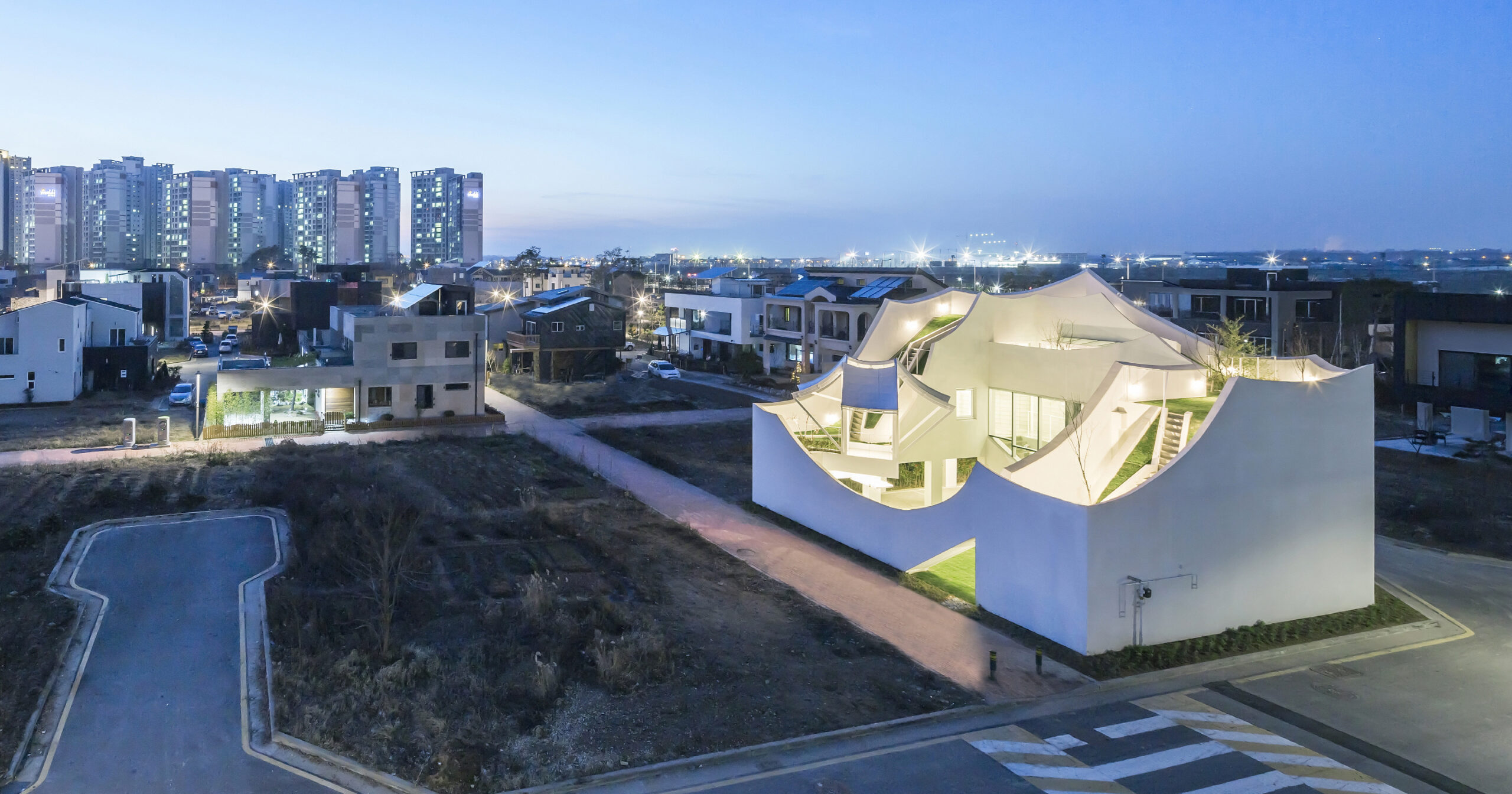Architizer's new image-heavy daily newsletter, The Plug, is easy on the eyes, giving readers a quick jolt of inspiration to supercharge their days. Plug in to the latest design discussions by subscribing.
Kilns are used as part of drying processes for many different traditional artisan practices, from ceramic tiles and brick-making to hops for beer. In the 20th century, industrialization processes revolutionized traditional processes. Interestingly, products that had a long association with regional or local techniques and expressions of identity became universally available. That is, moving away from the more human elements involved in their manufacture resulted in products that were standardized and more universally available, rendering their former manufacturing sites obsolete.
Now, often decades after they were abandoned, some of these buildings are being given a second life. In the face of mass production, architects are recognizing the value in former kilns, often vestiges of highly regional production processes, and poetically transforming these forgotten relics into highly local and specific cultural sites.
Jingdezhen Imperial Kiln Museum
By Studio Zhu Pei, Jingdezhen, China
Project of the Year 2021 & Jury Winner, 9th Annual A+Awards, Museum
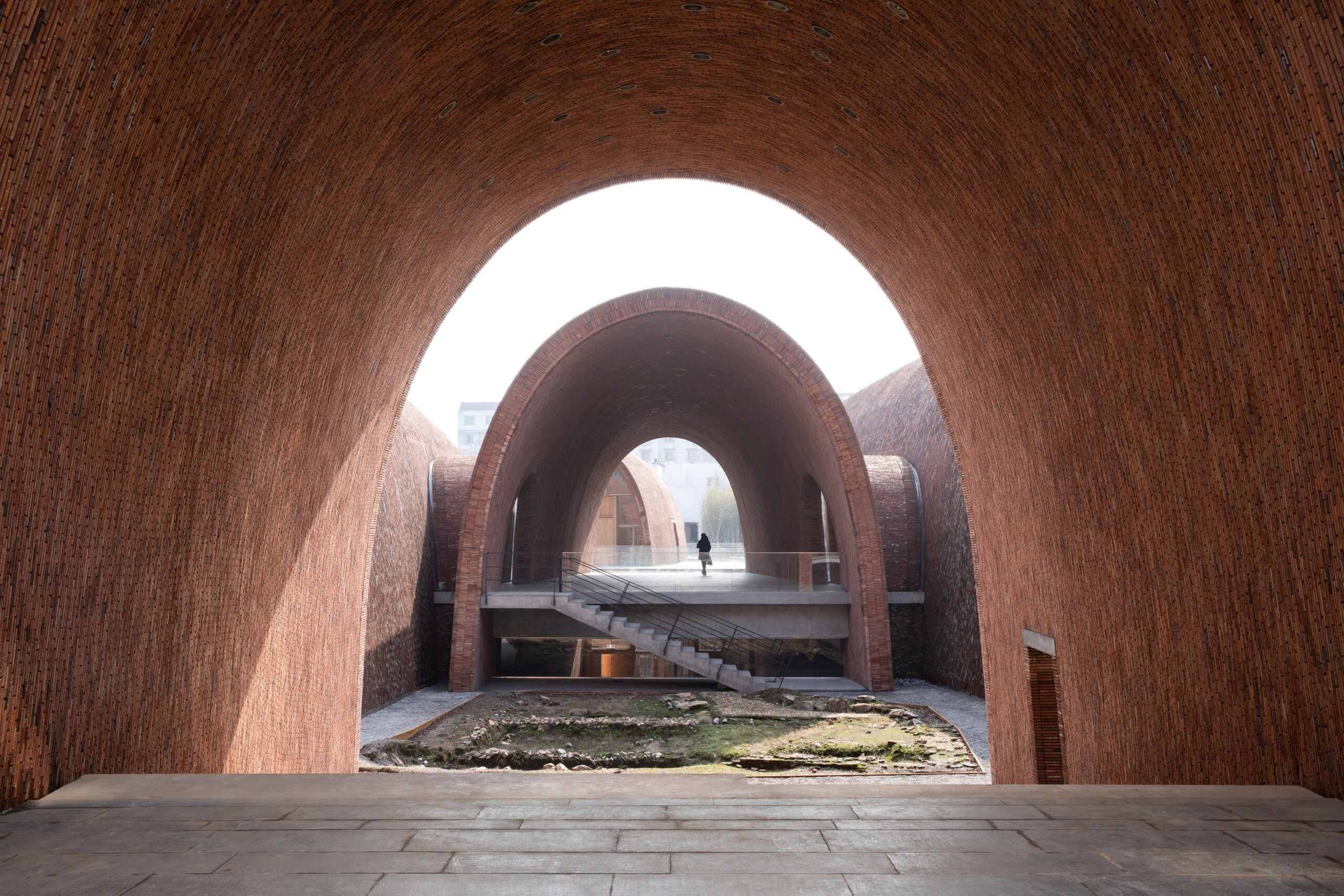
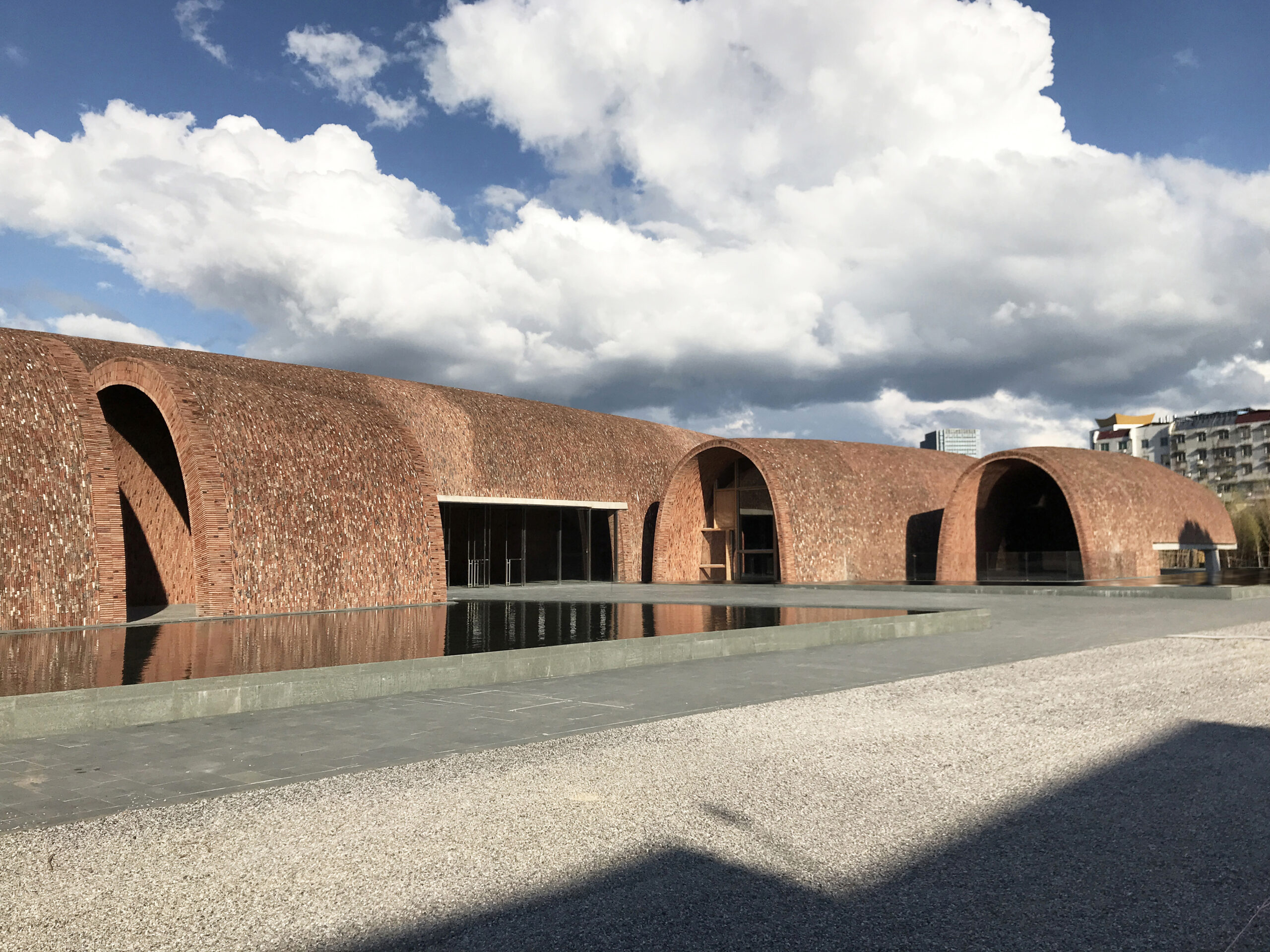 Jingdezhen, China was once home to the Imperial Kiln of the Ming and Qing Dynasties. The ancient facilities now lay in ruin, however, their former site serves as the perfect platform to display the many precious porcelain artifacts that were once fired in their brick ovens. Museums are usually designed as singular structures, iconic buildings that symbolize the museum’s brand. Instead, Studio Zhu Pei broke this mold, fracturing the program into eight vaults of varying size, length and curvature, which call to mind the spatial and material quality of the ruined kilns.
Jingdezhen, China was once home to the Imperial Kiln of the Ming and Qing Dynasties. The ancient facilities now lay in ruin, however, their former site serves as the perfect platform to display the many precious porcelain artifacts that were once fired in their brick ovens. Museums are usually designed as singular structures, iconic buildings that symbolize the museum’s brand. Instead, Studio Zhu Pei broke this mold, fracturing the program into eight vaults of varying size, length and curvature, which call to mind the spatial and material quality of the ruined kilns.
LANDsPARK
By Marco, Gubbio, Italy
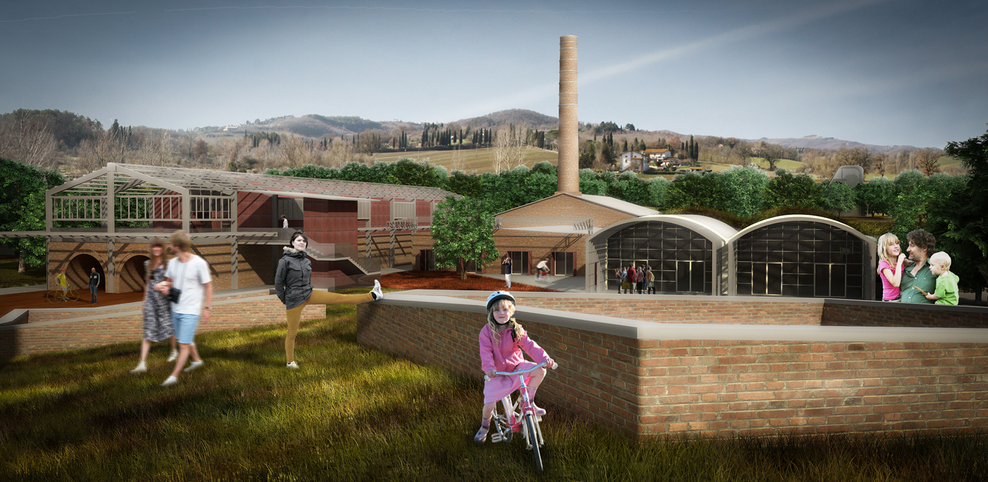
 The former kiln Hoffmann “Gualtiero Fagioli” was the largest abandoned industrial area around Gubbio. The glory days of the factory date back to the early 20th century, when it was erected as a massive brick production site. Fast forward to the 21st century, when the architects viewed the abandoned structure as a high potential site for activating the imagination. Hence, while preserving the brick that is so essential to the building’s former identity, their plans harness the spatially ample and formally diverse rooms to facilitate various community gathering areas.
The former kiln Hoffmann “Gualtiero Fagioli” was the largest abandoned industrial area around Gubbio. The glory days of the factory date back to the early 20th century, when it was erected as a massive brick production site. Fast forward to the 21st century, when the architects viewed the abandoned structure as a high potential site for activating the imagination. Hence, while preserving the brick that is so essential to the building’s former identity, their plans harness the spatially ample and formally diverse rooms to facilitate various community gathering areas.
Pugong Mountain Geopark, Lime Kiln Museum
By Architectural and Urban Planning Design & Research Institute, Huazhong Univ. of Sci.&Tech., Xinyang, China

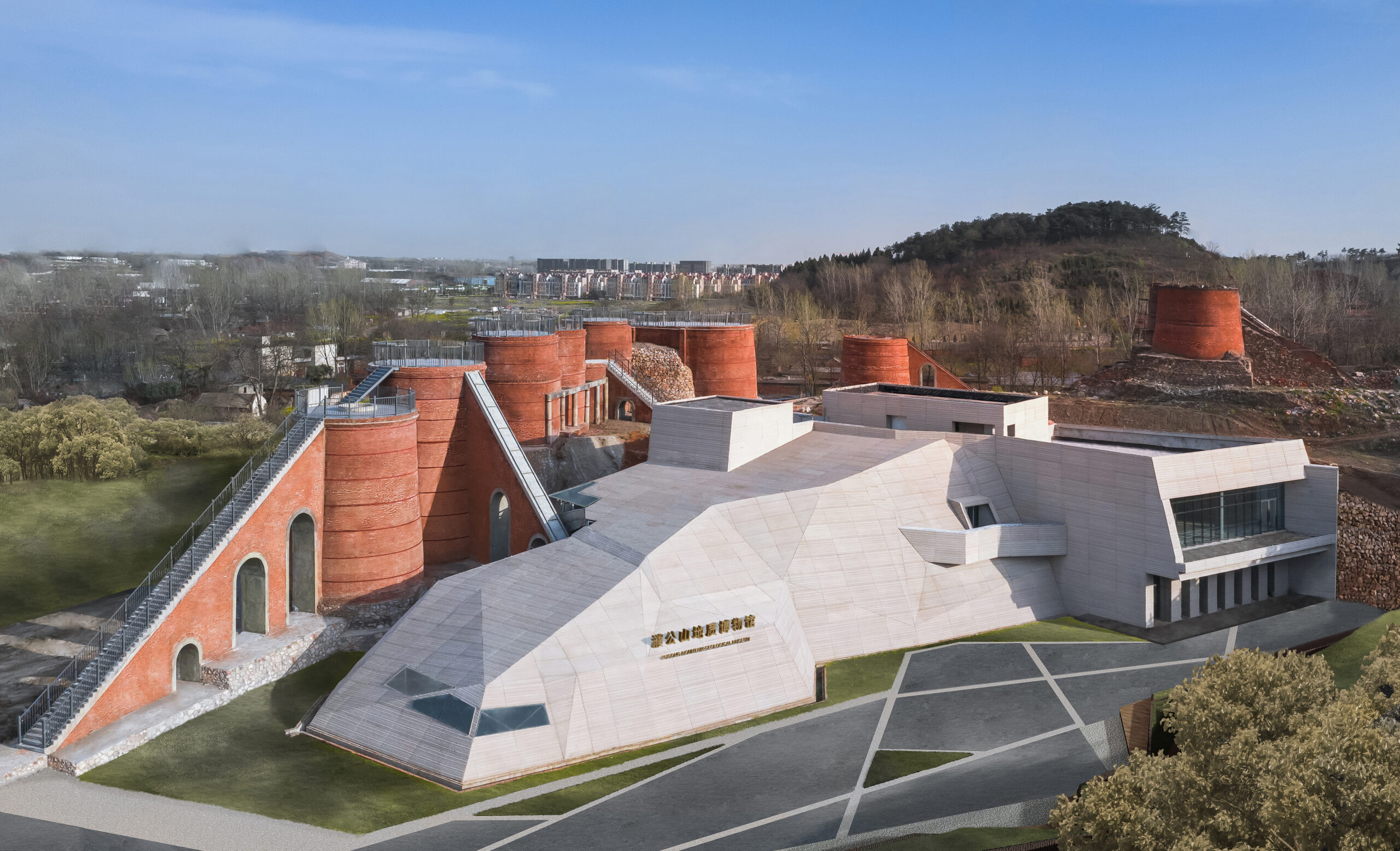 Carved into a rugged limestone mountain, the red brick silos of this lime kiln stand apart from their natural setting. After burning brightly for decades, and emitting massive stores of carbon in so doing, newly introduced national environmental protection policy pushed the building into near obsolescence. Recognizing the site’s symbolic potential of, the local government invited us to design the museum that would offer ecological education. The architects hence transformed the structure to quite literally provide visitors with a new perspective on environmentally destructive practices that were once taken for granting — architectural production included.
Carved into a rugged limestone mountain, the red brick silos of this lime kiln stand apart from their natural setting. After burning brightly for decades, and emitting massive stores of carbon in so doing, newly introduced national environmental protection policy pushed the building into near obsolescence. Recognizing the site’s symbolic potential of, the local government invited us to design the museum that would offer ecological education. The architects hence transformed the structure to quite literally provide visitors with a new perspective on environmentally destructive practices that were once taken for granting — architectural production included.
The Kiln
By Re-Format LLP, Selborne, United Kingdom
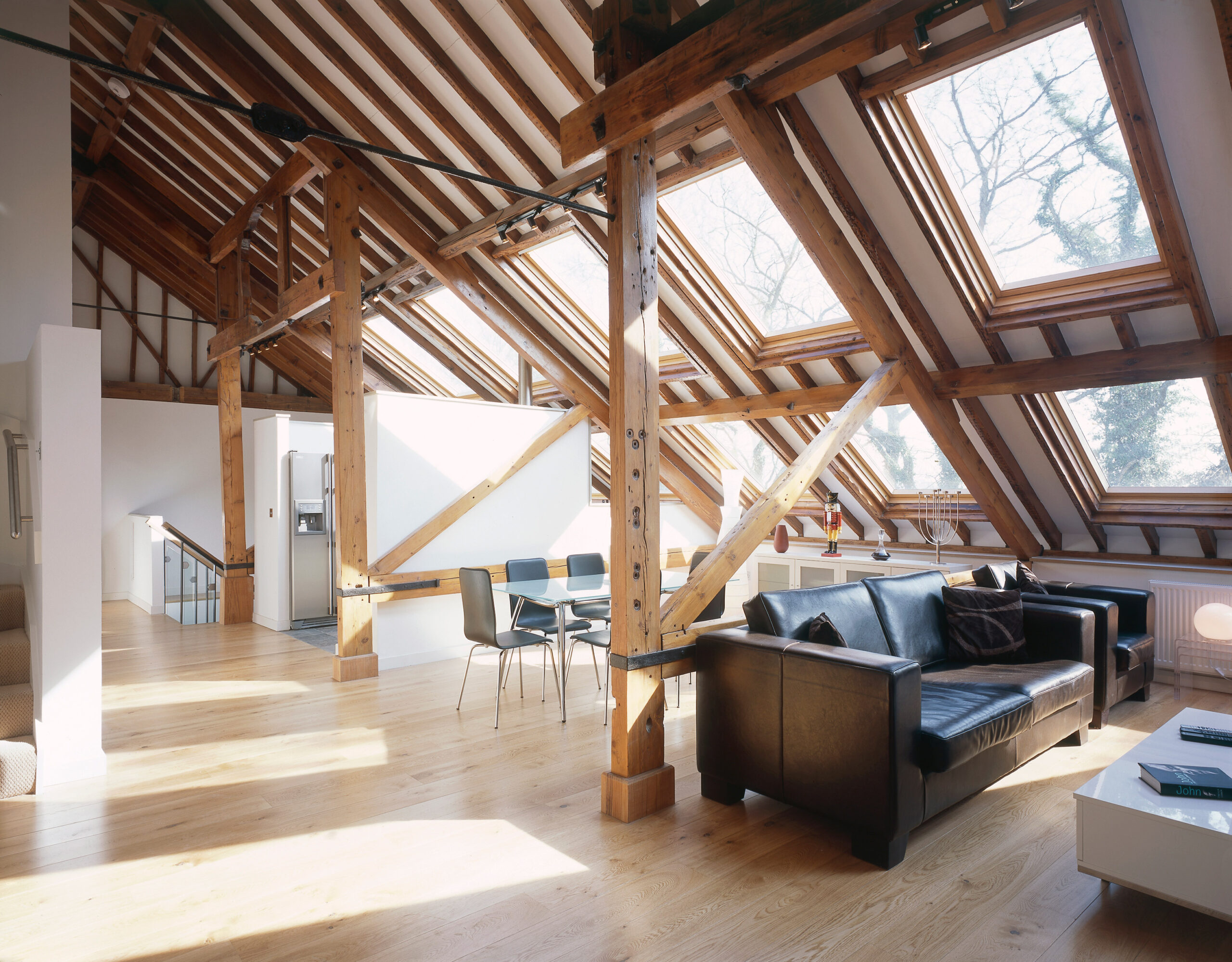
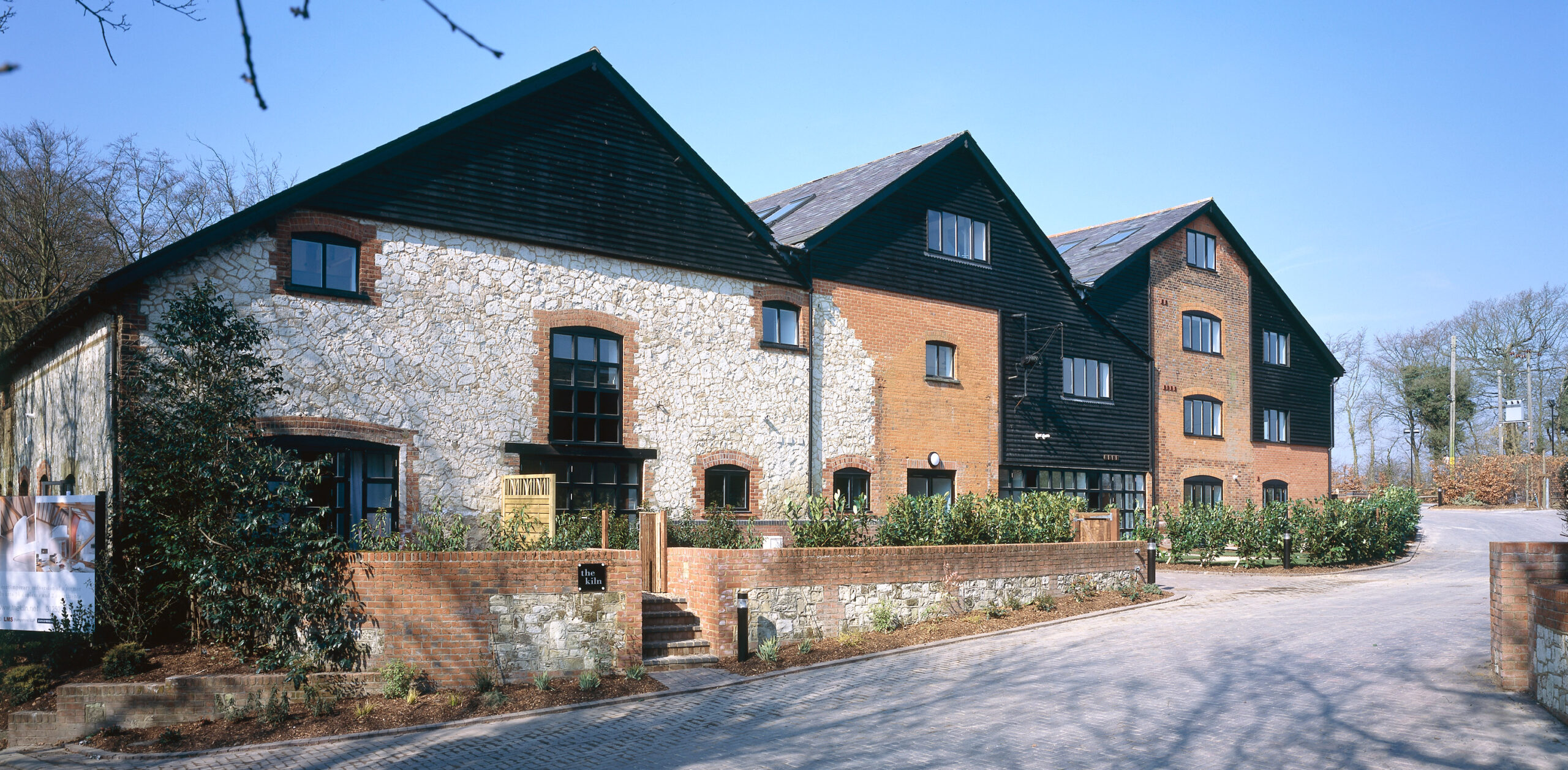 Unbeknownst to many, hop kilns have their own special architectural terminology: oasts refers to the tall, conical buildings where hops were traditionally dried, pressed and packaged before being sent to breweries throughout England. Less hyped and more subtle traditional hops kilns also exist, and this project, restores some some of them. This modern adaptive reuse project in Sotherington Lane takes advantage of the iconically quaint countryside of Hampshire, reveling in the history of the existing vernacular structure and enhancing it with clean, bright and elegant interior design.
Unbeknownst to many, hop kilns have their own special architectural terminology: oasts refers to the tall, conical buildings where hops were traditionally dried, pressed and packaged before being sent to breweries throughout England. Less hyped and more subtle traditional hops kilns also exist, and this project, restores some some of them. This modern adaptive reuse project in Sotherington Lane takes advantage of the iconically quaint countryside of Hampshire, reveling in the history of the existing vernacular structure and enhancing it with clean, bright and elegant interior design.
Brickyard Retreat Renovation
By: LLLab., Beijing, China


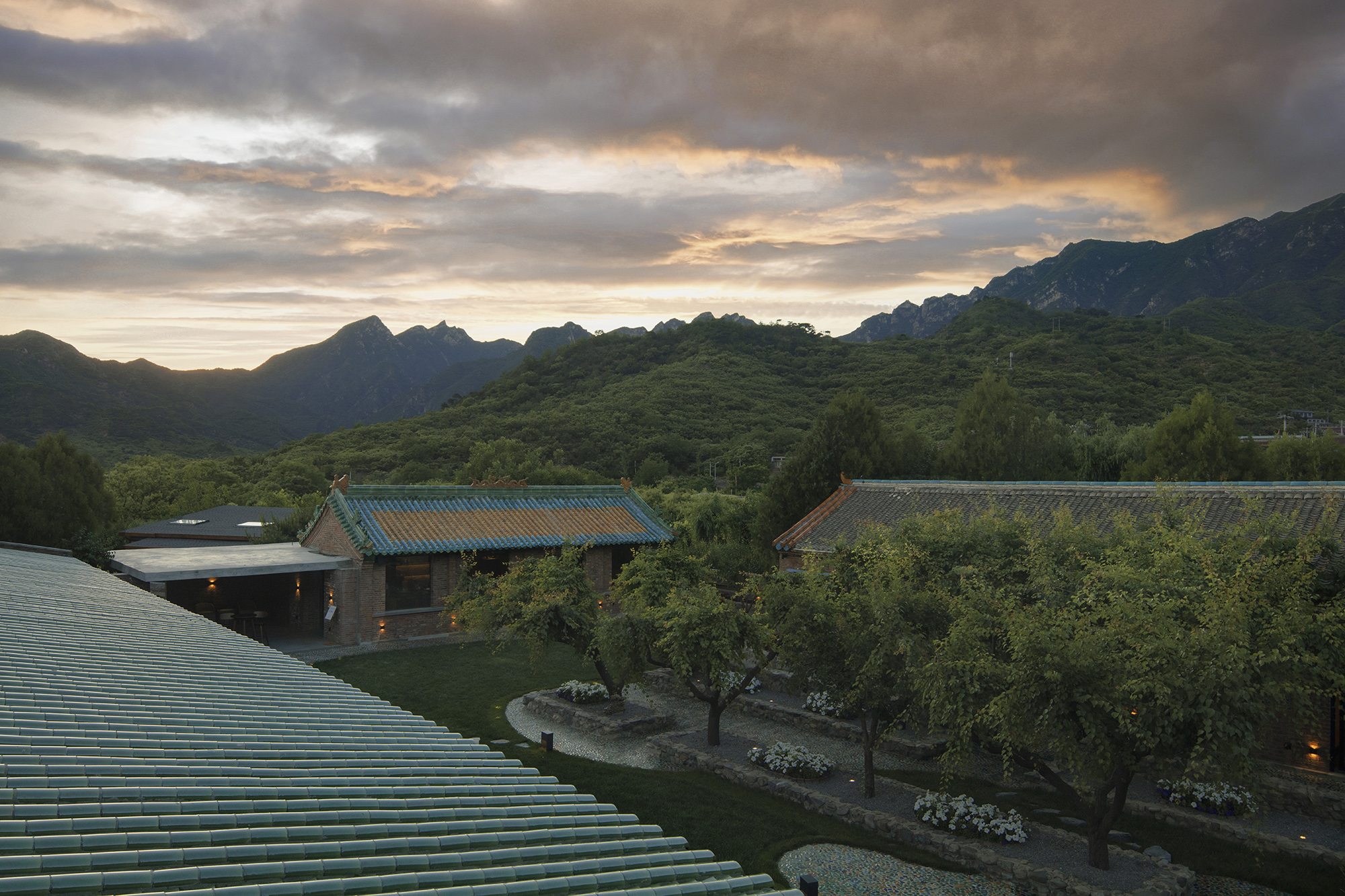
Images by Arch-Exist Photography
Once known as the glazed tile factory, this decommissioned tile firing workshop is found at the foot of the Great Wall in Beijing. Having lost its raison d’être due to decreased demand, the building sat vacant until 2010, when it was resuscitated and given new life as a hotel. Owned by local villagers that love architecture and Chinese culture, on September 1, 2020, the factory building transitioned again, at which point LLLab. was brought into the fold. The architectural intervention focuses on three main architectural elements: Glazed Tile, Old Kiln and Red Brick. Of particular interest for this collection, the architectural language of the kiln — a sequence of cave-like space ‚ is unified through colored tiles and intensified through green glazed tile roofs that mark that space’s particular importance.
House CP, Sesimbra
By SPL-Arquitectos, Sesimbra, Portugal
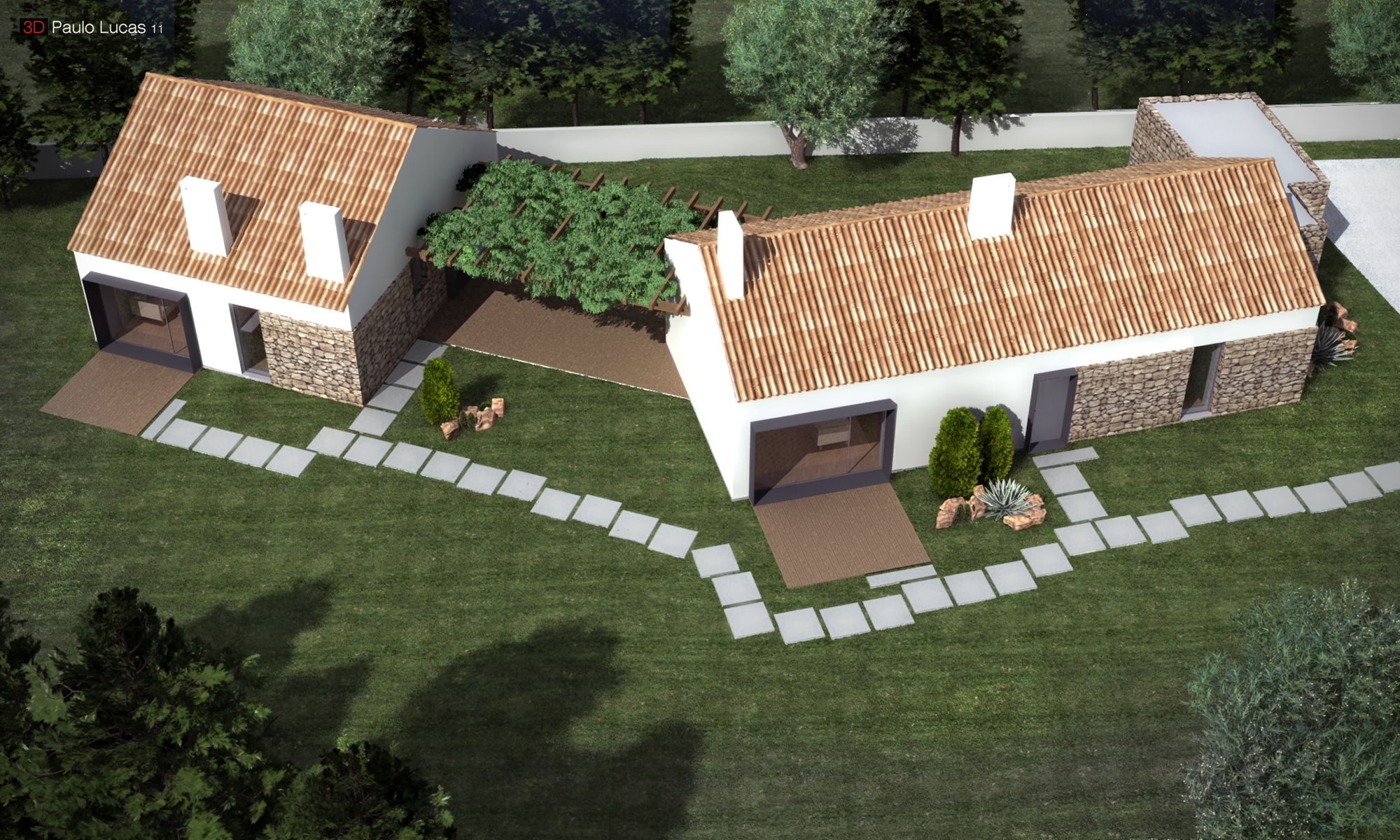
 Physical and legal constraints set the tone for this rehabilitation project, however the architects did not allow the various parameters to define the shape of their design. In addition to two houses that already existed on the sit, an old lime kiln also became the object of recovery and restoration. Though this may not have been part of the brief, the architects saw the potential that the extant structure held serve as a point of reference to those arriving on the property. To this end, the design consciously proposes materials and coatings that evoke a more rustic or bucolic image while simultaneously mobilizing modern design language to strike an interesting tension.
Physical and legal constraints set the tone for this rehabilitation project, however the architects did not allow the various parameters to define the shape of their design. In addition to two houses that already existed on the sit, an old lime kiln also became the object of recovery and restoration. Though this may not have been part of the brief, the architects saw the potential that the extant structure held serve as a point of reference to those arriving on the property. To this end, the design consciously proposes materials and coatings that evoke a more rustic or bucolic image while simultaneously mobilizing modern design language to strike an interesting tension.
Tower of Bricks
By Interval Architects, Hengshui, China
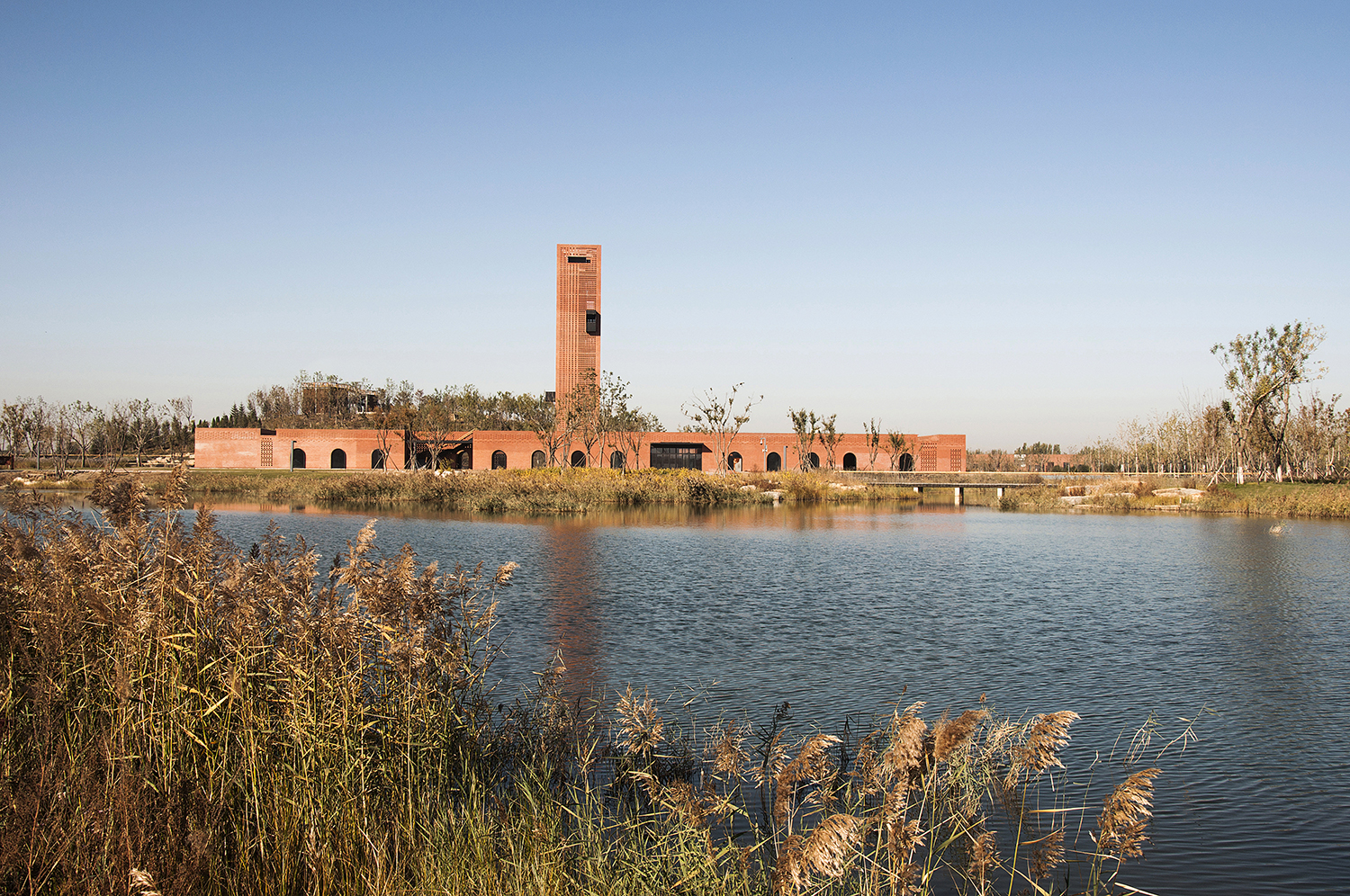
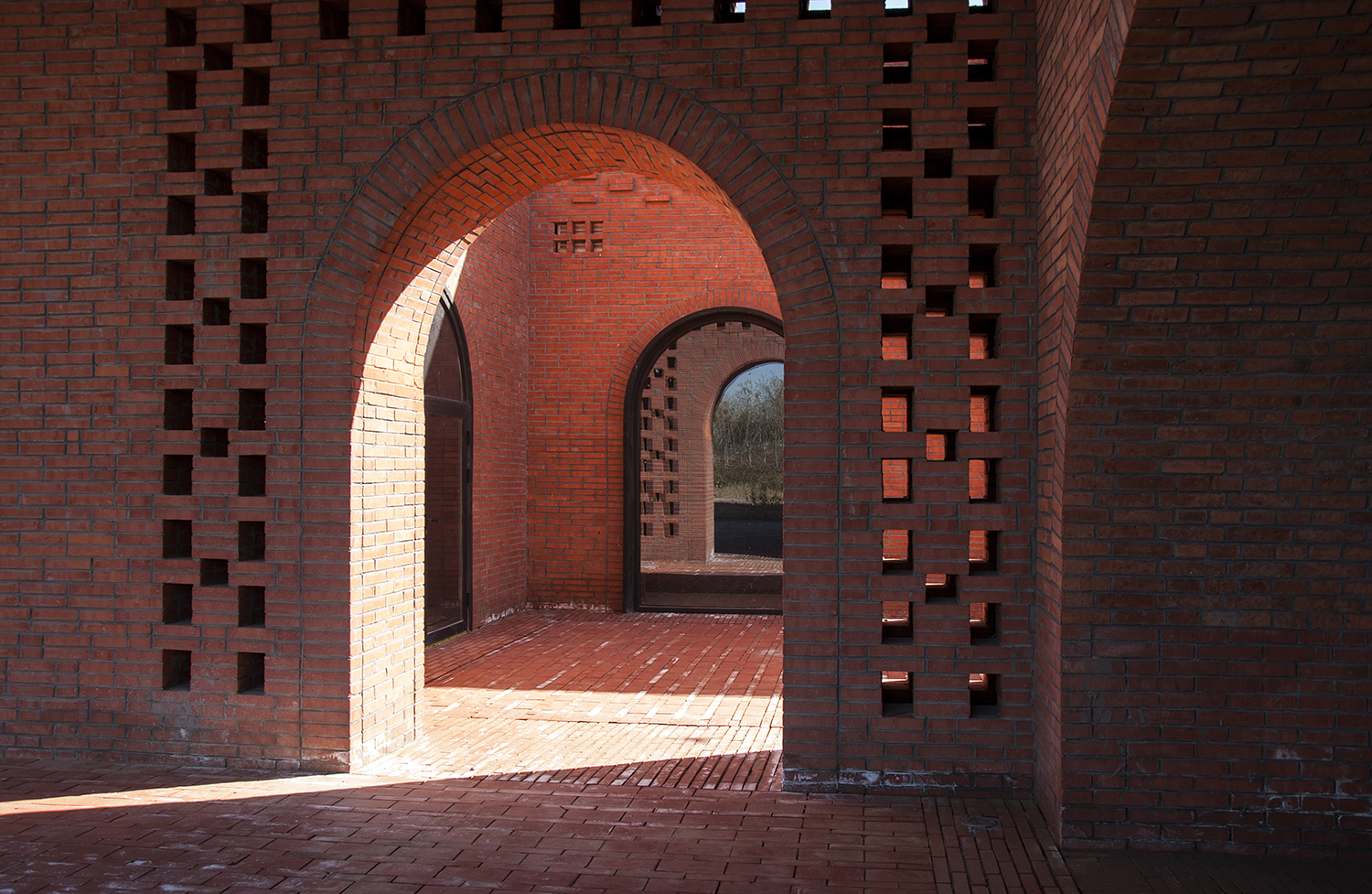 Between Hengshui wetland park and the city proper, an abandoned Hoffman brick kiln sat for decades as a result of a national policy banning brick burning int he name of environmental protection. The warm red structure once sat on a wetland into which nearby factories used to drain their sewage water; however, it was eventually deemed unsafe and demolished as a result. When the government decided to convert the wetland into a botanical park, the former building was resurrected by Interval Architects. Hence, this new building is not physically a reused kiln; however, it does recycle the spatial memory and adapt the architectonic language of the former brick firing structure.
Between Hengshui wetland park and the city proper, an abandoned Hoffman brick kiln sat for decades as a result of a national policy banning brick burning int he name of environmental protection. The warm red structure once sat on a wetland into which nearby factories used to drain their sewage water; however, it was eventually deemed unsafe and demolished as a result. When the government decided to convert the wetland into a botanical park, the former building was resurrected by Interval Architects. Hence, this new building is not physically a reused kiln; however, it does recycle the spatial memory and adapt the architectonic language of the former brick firing structure.
Architizer's new image-heavy daily newsletter, The Plug, is easy on the eyes, giving readers a quick jolt of inspiration to supercharge their days. Plug in to the latest design discussions by subscribing.






